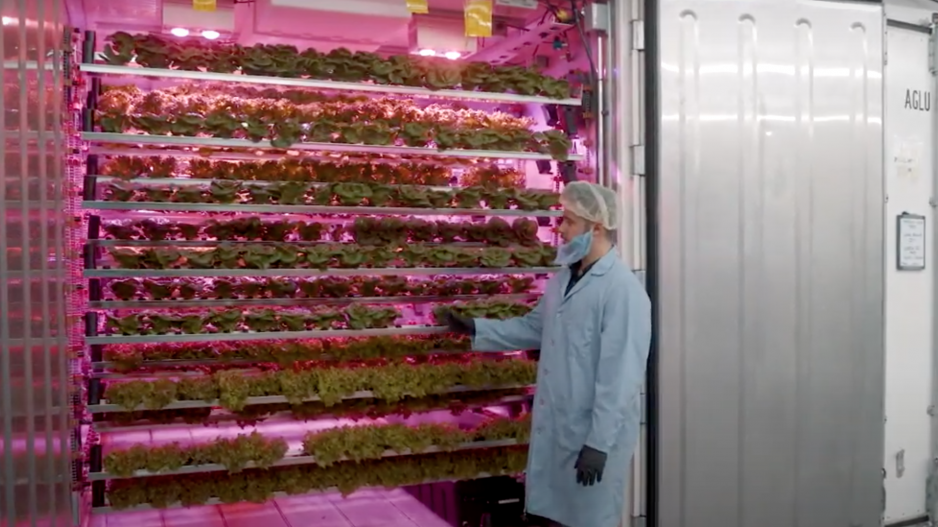What happened: Buyer places order for 14 automated machines designed for farming
Why it matters: Order comes as shortages in labour pool draw concerns amid pandemic
As the COVID-19 crisis exposes vulnerabilities in the nation’s labour pool, some B.C. farmer are turning to automated growing chambers for help.
Langley-based agri-tech firm CubicFarm Systems Corp. (TSX-V:CUB) announced Friday (July 10) an order for 14 of its chambers in a deal worth $2.1 million.
The customer was identified only as a B.C.-based agriculture industry expert specialized in equipment sales in Western Canada.
The new machines are expected to be installed in Armstrong, B.C., by year’s end.
CubicFarm Systems has developed automated hydroponic growing chambers that look like shipping containers and offer a controlled environment for growing crops and animal feed.
CEO Dave Dinesen told Business in Vancouver earlier this year the technology came to fruition after company founders visited Puerto Rico and saw the need to grow produce in any location (the U.S. territory depends significantly on imports).
Dinesen said automation within the chambers reduces the amount of land needed for growing.
“It ticks all the good boxes and makes indoor growing economical,” he said in January.
“Every 90 minutes, hundreds of trays of plants will pass by you so you can stand in one spot and do all of your harvesting and planting, and it lets us have much fewer lights than any other system, much less labour. And then because the machine brings everything to the worker at the front you don’t need to leave any access hallways for people, so we get far more yield than any other system.”
Dependency on foreign labour in the agricultural sector — and the unsafe working conditions some workers face — was exposed to many Canadians as the COVID-19 crisis unfolded.
Hundreds of workers brought into Canada to help farm have fallen ill since April.
And in June the Mexican government said it would stop sending migrant workers from their country to Canadian farms in which COVID-19 cases have been reported.
Mexico reversed course after reaching an agreement with Canada to improve safety measures for migrant workers on Canadian farmers, but concerns over labour remain.
Dinsen said that for now most of the market is made up of the early adopters but he’s certain that farmers will have no choice but to start using new technologies to make farming more sustainable.
An August 2019 report from the Royal Bank of Canada (TSX:RY), meanwhile, forecasts multibillion-dollar growth potential for the country if farmers and companies can successfully seize on new technology.
The bank’s Farmer 4.0 study estimated that in Canada, where one-quarter of farmers will be 65 or older by 2025, the agricultural labour shortage is expected to grow to 123,000 positions by 2030.
However, Royal Bank determined that the sector’s GDP output could grow from $40 billion to $51 billion over the next decade if the right investments are made in people, skills and technology.
The report also pointed out a number of deficiencies in technology adoption within the sector, including Canada’s 3.4% global share of agri-tech investments. That’s behind India and Brazil, despite Canada’s more abundant access to land, water and capital.
CubicFarm Systems has a backlog of 161 machines under deposit and awaiting installation.
That backlog is expected to turn into revenue for the company in late-2020 to mid-2022.




